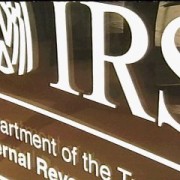Growing IRS Workload Causing Problems

WASHINGTON (AP) — The Internal Revenue Service can’t keep up with surging tax cheating and isn’t sufficiently collecting revenue or helping confused taxpayers because Congress isn’t giving it enough money to do its job, a government watchdog said Wednesday.
To cope with its growing and increasingly complex tasks, the agency is relying more on computer software designed to weed out fraud, Nina E. Olson, the national taxpayer advocate, said in her annual report to lawmakers.
But errors are abundant, creating even more work for the agency when taxpayers dispute its findings, the report said. In addition, it said the agency is increasingly relying on computer systems to evaluate tax returns that sometimes end up eroding taxpayers’ rights, and people are having a harder time getting through to the IRS by telephone or letter, she said.
“The overriding challenge facing the IRS is that its workload has grown significantly in recent years while its funding is being cut,” said Olson, an independent watchdog within the IRS. “This is causing the IRS to resort to shortcuts that undermine fundamental taxpayer rights and harm taxpayers — and at the same time reduces the IRS’ ability to deliver on its core mission of raising revenue.”
IRS spokeswoman Michelle Eldridge said linking tight agency budgets to supposed infringements of taxpayers’ rights “is inaccurate and without basis in fact.” She said the IRS has been using congressionally approved compliance programs to curb fraud and which are constantly audited to make sure people’s rights are protected.
“While fewer dollars in a tight budget environment impacts elements of taxpayer service, it does nothing to erode our protection of taxpayers,” she said.
By pointing her finger at the IRS budget, Olson was highlighting a politically sensitive issue. Especially in times of huge federal deficits and tight budgets, many lawmakers have shown little interest in being generous to the widely unpopular agency, which processes 141 million individual tax returns annually, including almost 120 million requests for refunds.
Congress cut the IRS budget to $11.8 billion this year. That is $300 million less than last year and $1.5 billion below the request by President Barack Obama, who argued that boosting the agency’s spending would fatten tax collections and provide better service to taxpayers.
Those arguments did little to win over lawmakers.
“Like families across the country, the IRS will have to do more with less,” Rep. Jo Ann Emerson, R-Mo., who heads the House Appropriations subcommittee that controls the agency’s budget, said last fall.
Olson’s report came just days after the IRS estimated that people and companies underpaid their taxes by a huge $385 billion last year after audits and other enforcement efforts, compared with around $2.3 trillion that the agency collected.
Olson noted that these tax collections are what make government programs possible and that the underpayment comes as lawmakers hunt for ways to pare federal deficits exceeding $1 trillion yearly.
“Yet obtaining a little extra money to bring in a lot of extra money remains an intractable challenge for the IRS, and that is unfortunate,” the report said.
Underscoring the IRS’ volume of work, the report said the agency contacted taxpayers 15 million times in 2010 to change their claimed tax liability. Only 1 in 10 of those contacts was considered an audit, which gives taxpayers additional rights such as the ability to go to tax court.
To cope with its growing burden, the agency is relying more frequently on computers and having less personal contact with taxpayers. As a result, the IRS is increasingly using “practices and procedures that harm taxpayers by acting on assumptions of noncompliance arrived at by automated processes that do not solicit, encourage or allow taxpayer response.”
The report said the number of returns seeking refunds that the agency computer program set aside for screening for possible fraud grew by 72 percent, to 1.1 million, from 2010 to 2011.
The report said the number of bogus refund claims is growing as people submit multiple false returns via electronic filing. The growth of refundable tax credits for purchases of first homes, college costs and other expenses is also contributing to the rising number of bogus claims. Refundable credits can produce cash payments to people who owe no taxes, making them enticing targets for fraud.
Olson’s report said the IRS handled more than 226,000 cases claiming identity fraud in 2011, a 20 percent increase over 2010. Thieves often request refunds by using the Social Security number of a person they falsely claim as a relative, frequently early in the filing season before the actual taxpayer files his or her return.
Though the overall rate of fraud remains relatively low, Olson said in an interview, “you want to make sure you’re not abusing the taxpayers by letting dollars go out the door.” Otherwise, she said, “taxpayers are going to get disgusted” and lose faith in the tax system.
In one measure of errors the agency is making, Olson’s bureau received 21,000 complaints from taxpayers last year after the IRS blocked requested refunds because it suspected fraud. Three in four of them eventually qualified for the money. Those refunds averaged $5,600 and it typically took six months for taxpayers to receive them.
In addition, the IRS corrected 10.6 million discrepancies in taxpayers’ returns in 2010 that it considered mathematical errors, more than double the 4 million corrected discrepancies in 2005, the report said. But the IRS itself made some errors. On 300,000 returns on which it disallowed exemptions for dependent children, it later had to restore the exemption just over half the time.
The report said that at the end of last year, it took the agency more than six weeks to answer nearly half of taxpayers’ letters and faxes dealing with adjustments to their returns. The agency does not accept emails from taxpayers, Olson said. The report also said that between 2004 and last year, the portion of phone calls from taxpayers the IRS answered fell from 87 percent to 70 percent.
“Few government agencies or businesses would be satisfied if their customer service departments were unable to answer three out of every 10 calls,” the report said.
Further complicating the IRS’ task are constant changes to the 3.8 million-word tax code. Over the previous decade, 4,428 changes have been made to it, including an estimated 579 changes in 2010.
___
Online:
IRS National Taxpayer Advocate report: www.TaxpayerAdvocate.irs.gov



